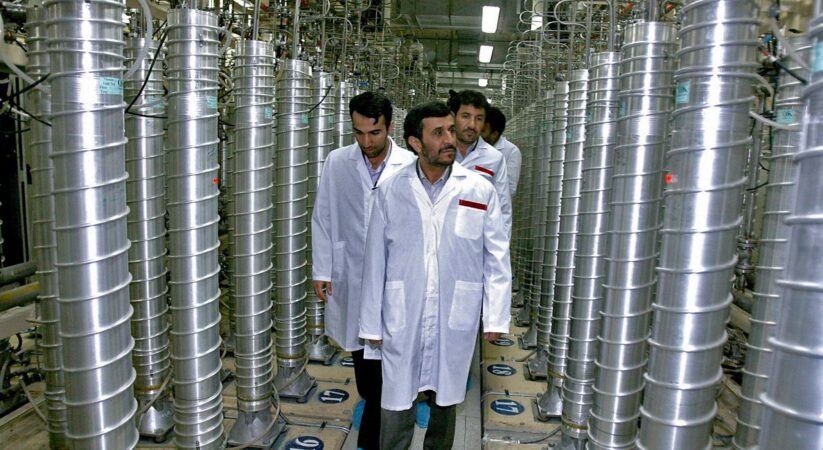WASHINGTON—For decades, the U.S. and Iran have waged a shadow war across the Middle East following a rule understood by both sides: If you hit us, we will hit back, at least as hard.
But as the Biden administration prepares to retaliate for a drone strike by Iranian-backed militias that killed three American soldiers last weekend, the calculations of the two longstanding adversaries has changed. Neither Washington nor Tehran appears eager for a direct military confrontation.
Sunday’s drone strike against a small outpost in Jordan near its borders with Iraq and Syria was the first attack by Iran-backed proxies since October to cause U.S. fatalities, sparking calls in Congress for the White House to respond with military action targeting Tehran.
For the Biden administration, hitting Iran’s paramilitary forces risks a counterstrike against American troops or Middle East bases by Tehran’s formidable arsenal of advanced missiles and drones, expanding the war in Gaza between Israel and Hamas into a wider regional conflict that the White House is seeking to avoid in a presidential election year.
For Iran, the calculation is at least as complex. If it tries to rein in the proxy forces it backs in Iraq, Yemen, Syria and Lebanon, it risks tarnishing its claim to be leading the so-called axis of resistance of militias and friendly Middle East allies against the U.S. and Israel. But if it takes on the more powerful U.S. directly, it faces a potentially punishing military defeat.
“Each side is trying to calibrate the use of force as a way of trying to change the behavior of the other side, but they don’t want to cross red lines,” said Gerald Feierstein, a former U.S. State Department official and a senior fellow at the Middle East Institute, a Washington think tank.
President Biden has declared he holds Iran responsible for the deadly drone attack, arguing that the Iraqi militias he says were behind the drone strike are among the many proxy forces in the Middle East funded and armed by Iran’s paramilitary Quds Force.
Biden has approved plans for multiday strikes in Iraq and Syria against multiple targets, including Iranian personnel and facilities, according to U.S. officials. But the response, expected to begin as soon as this weekend, will be “tiered,” mixing military actions with other steps that can be adjusted to signal that Washington doesn’t seek further escalation.
The goal, U.S. officials say, is to get Iran and its proxies to dial back their attacks across the region as the White House and its allies pursue talks on a cease-fire between Hamas and Israel that they hope will de-escalate tensions.
Iran has sent its own signals, insisting it didn’t order the attack and warning that U.S. reprisals against Iranian territory or personnel deployed around the region would prompt it to strike back. The underlying message, analysts said, was one of restraint as long as Washington doesn’t cross its red lines.
“What we’re seeing is a kind of negotiation behind the scenes to manage tensions so that they don’t escalate,” said Sanam Vakil, the director of the Middle East program at Chatham House, a London think tank.
By signaling its intention well in advance of any strikes, the White House may give Iran time to reposition personnel and equipment, limiting the effectiveness of the U.S. attacks, analysts said. But it could also ease pressure on Tehran to respond.
Joseph Votel, a retired U.S. Army general and former top Middle East commander, said the U.S. response had to send a message to Iran that would only be effective if it included direct attacks on Iranian targets, along with other strikes on its proxies.
“There has to be a very unambiguous message to Iran that we hold them responsible for the actions of these militias,” he said. “I think the targeting has to include some targets that are of value to Iran.”
The targets don’t need to be inside Iran to deliver the message, he added, but they need to be chosen carefully to avoid sparking a wider war. “They have the ability to strike back across the region with a fairly robust missile capability,” he said.
As recently as 2020, tensions between Washington and Tehran nearly spilled into sustained conflict after then-President Trump ordered a U.S. airstrike in Baghdad that killed Maj. Gen. Qassem Soleimani, the leader of Iran’s Islamic Revolutionary Guard Corps paramilitary Quds Force. Iran responded with a barrage of ballistic missiles against U.S. troops in Iraq, an attack that caused dozens of casualties but no U.S. deaths.






Thanks designed for sharing such a pleasant
thinking, post is good, thats why i have read it entirely
my webpage eharmony special coupon code 2025
350fairfax nordvpn promo code
Hi! Do you know if they make any plugins to assist with Search Engine Optimization? I’m trying to get my blog to rank for some targeted keywords but I’m not seeing very good results.
If you know of any please share. Cheers!
I think this is one of the most important info for me. And i am glad studying your article.
But want to statement on some general issues, The site taste is perfect,
the articles is really nice : D. Good process, cheers
Here is my webpage: nordvpn coupons inspiresensation (t.co)
The other day, while I was at work, my cousin stole my iphone and tested to see if it can survive a thirty
foot drop, just so she can be a youtube sensation. My apple ipad is now destroyed and she has 83
views. I know this is entirely off topic but I
had to share it with someone!
Also visit my blog post Nordvpn coupons inspiresensation
Hey there this is kinda of off topic but I was
wanting to know if blogs use WYSIWYG editors or if you have to manually
code with HTML. I’m starting a blog soon but have no coding skills so I wanted to get advice
from someone with experience. Any help would be greatly appreciated!
Here is my blog: nordvpn coupons inspiresensation (http://wall.sh)
Hey! This is kind of off topic but I need some guidance from an established blog.
Is it very difficult to set up your own blog? I’m not very techincal but I can figure things out pretty fast.
I’m thinking about creating my own but I’m not sure where to
start. Do you have any points or suggestions? Many thanks
Here is my web site – nordvpn coupons inspiresensation (http://t.co)